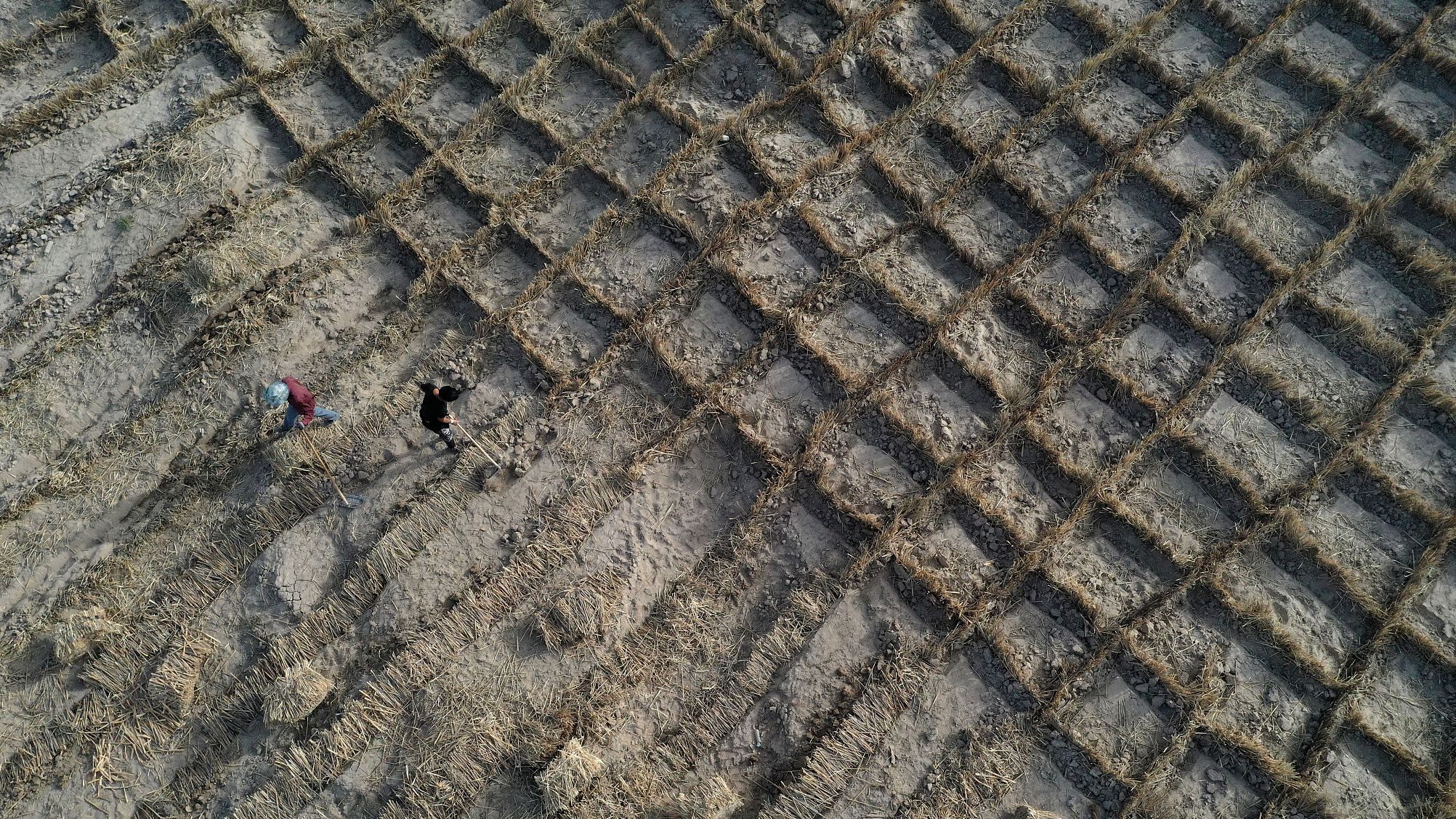
An aerial view of people planting straw nets in desert areas in Taklamakan Desert in northwestern China, July 14, 2020. /CFP
An aerial view of people planting straw nets in desert areas in Taklamakan Desert in northwestern China, July 14, 2020. /CFP
Chinese researchers have developed a paving machine that can more efficiently "plant" straw nets in desert areas to combat desertification.
The machine has proved capable of reducing the high labor costs involved in the deployment of checkerboard barriers - large straw nets placed on the surface of deserts to reduce the wind speed and fix moving sand dunes, according to the Desert Control Research Institute of Gansu Province, which developed the machine.
This checkerboard barrier technique is widely used in China's arid inland areas, especially to protect traffic arteries from the incursion of deserts.

The self-developed machine plants the straws more efficiently in northwestern China's Wuwei, Gansu Province, Aug. 5, 2019. /CFP
The self-developed machine plants the straws more efficiently in northwestern China's Wuwei, Gansu Province, Aug. 5, 2019. /CFP
The institute said the machine makes the hand-planting process mechanized, by digging trenches and paving straw through its drive system, and can be used in varied terrain. The efficiency of the paving machine is estimated to be four to six times that of manual work, said Zhao Peng with the institute.
China started research on combating desertification in the 1950s and has managed to reverse its desertification trend.
China's experience and technologies for combating desertification have also been extended to other countries facing the same challenges. Since 1993, the institute has provided training courses on desertification prevention and control for more than 1,000 officials and scholars from some 80 countries.
Source(s): Xinhua News Agency

